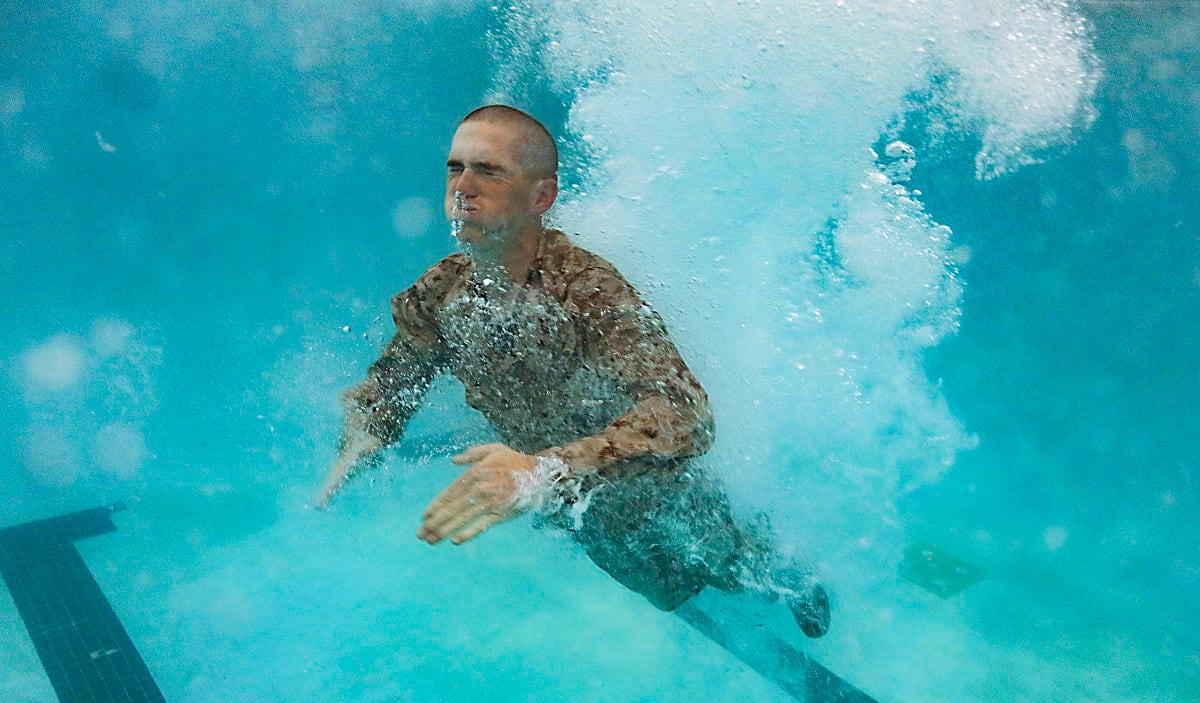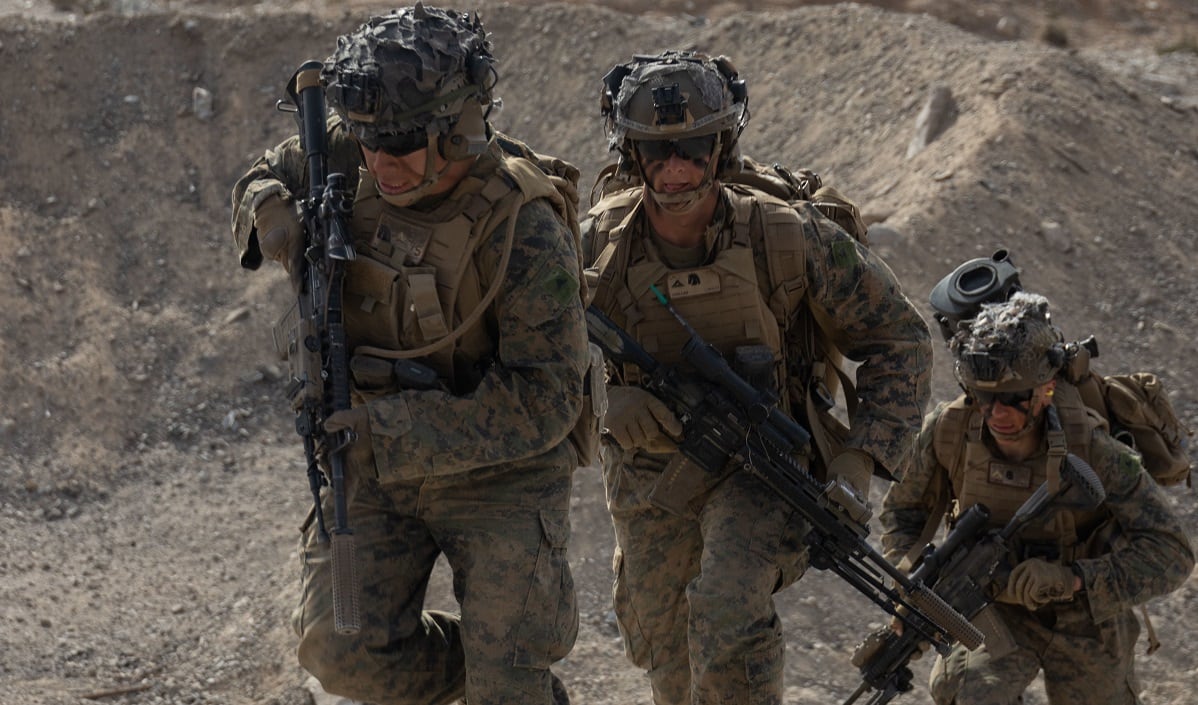Beware a calm surface ― you never know what lies beneath
— Paula Hawkins, “Into the Water”
The Marine Corps’ latest addition to its trilogy of documents that are redesigning and restructuring the service appears innovative and forward-looking.
The Marine Corps’ Training and Education 2030 includes much that is good. Many of the training and education initiatives proposed are long overdue. We applaud Marine Corps senior leaders for recognizing deficiencies and shortcoming and articulating a plan to address them.
But let’s not be fooled by what’s on the surface. What lies beneath is destructive and comes dangerously close to violating U.S. law.
We refer to three important areas. One is the coup de grace to the Marine Corps combat development process. Two is the tacit admission that the Marine Corps is no longer a combined arms force. Three is the clean break from service componency.
RELATED

The elevation of the commanding general, Training and Education Command to deputy commandant status and the realignment of doctrinal development under Training and Education is a death blow to the Marine Corps combat development process. No single commander now owns the entire process for developing the operating concepts and guiding the integrated determination of needed capabilities and requirements.
The genius of Marine Corps combat prowess has been getting the capstone and supporting operating concepts right. The brilliance of the combat development process for the past 30 years has been unity of command in identifying and prioritizing correct and sustainable requirements to enable concepts.
These requirements broadly include doctrine, force structure and organizations, training and education, equipment, and facilities and support.
The new training document effectively has codified the disjointed and uncoordinated process that most recently failed to define the problem in an operating concept, which resulted in the emasculation of Marine Corps combat capabilities by moving straight to the solution, Force Design 2030. We believe the Marine Corps will be better served by a combat development process where concepts and requirements are determined and integrated under one commander.
Training and Education 2030 barely pays lip service to combined arms training. Instead, the focus is almost exclusively on integrated naval fires.
The lack of emphasis on combined arms training is not surprising because Marine Corps leaders have eliminated or significantly reduced the capabilities needed to train for and implement combined arms operations. Tanks, assault breaching and bridging have been totally eliminated; the number of Marines in infantry battalions has been reduced by 21%, cannon artillery has been reduced by 67%, assault amphibious vehicles have been reduced by 33%, and aviation has been reduced by 29% across the board.
The ugly truth based on these divestures is that the Marine Corps no longer has a combined arms capability and comes dangerously close to violating Title X, U.S. code, which states in part: “The Marine Corps shall be organized, trained, and equipped to provide fleet marine forces of combined arms… and shall perform such other duties as the President may direct.”
The cuts in combat capabilities seriously degrade the effective application of combined arms in the close and rear battles. The capability of the Marine Corps to “perform other duties as the President may direct” will significantly be constrained by too few appropriately sized combined arms teams built around Marine infantry.
As envisioned in Force Design 2030 and Training and Education 2023, the Marine Corps will not be organized, trained or equipped to conduct combined arms operations as traditionally understood.
This radical reorganization of the Marine Corps is not just an internal matter, but has serious implications for the Army, which likely will see its operational taskings increase to compensate for lost Marine Corps capabilities. It also will have implications for combatant commanders, who will have fewer forces available to support regional campaign plans.
We believe the focus of combat training should be on combined arms, of which the integration of naval fires is a necessary component but not the raison d’etre, or reason for being.
Much like ignoring combined arms, Training and Education 2030 virtually disregards service componency and at the expense of acknowledging the Fleet Maine Forces, the term the document refers to repeatedly.
The reference to “Fleet Marine Forces” is a look backward. The Fleet Marine Forces is a subordinate U.S. Navy type command under the fleet commander. Simply stated, Marines in the Fleet Marine Forces work for the Navy.
The Goldwater-Nichols Defense Reorganization Act of 1986 changed the way the Department of Defense was structured and permanently altered the way the U.S. military would fight future wars.
It gave the Marine Corps service equivalency as a separate component under Joint Force Commander control. Subordinating Marine Corps Forces to Fleet Marine Forces status gives up the Marine component’s seat at the table and violates the spirit and intent of Goldwater-Nichols by limiting Marine Corps contributions to the joint force.
As envisioned in Training and Education 2030, training to prepare Marines for service and functional componency, which is essentially a congressionally mandated responsibility, will take a back seat to naval integration.
Is it really in the Marine Corps best interest to subordinate itself to the Navy given the turmoil that service is experiencing with its own transformation? The answer is no. We believe the Marine Corps’ primary focus should be on supporting the combatant or joint force commander as a service or functional component, not on placing Marine Forces under Navy command and control.
Training and Education 2030 has much in it to be applauded. It’s not what is said that should concern Congress, the Department of Defense, the combatant commanders and the American people.
It’s what is not said that needs congressional oversight. What is not said is a threat to our national security.
Lt. Gen. Paul Van Riper is a career infantry officer. His previous assignments include commanding general, Marine Corps Combat Development Command.
Brig. Gen. Jerry McAbee is a career artillery officer. His previous assignments include chief-of-staff, Marine Corps Combat Development Command.
Have an opinion?
This article is an op-ed and, as such, the opinions expressed are those of the author. If you would like to respond or have an editorial of your own you would like to submit, please email Marine Corps Times Editor Andrea Scott.
Want more perspectives like this sent straight to you? Subscribe to get our Commentary & Opinion newsletter once a week.




